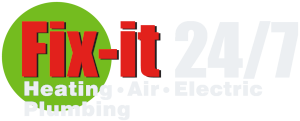How Does Electricity Flow? What Is an Electric Current?
September 7, 2018

So you’ve probably heard of amps, watts, and volts, but what do they all mean and how do they relate to your electrical system? Let’s go back to the classroom, and learn a little bit about each electrical measurement, how they relate to electric current, and what they can tell you about how electricity works.
How Does Electricity Flow?
Voltage (”electrical potential”)
The terms “volt” and “voltage” come from Alessandro Volta (1745-1827), best known for his invention of the first modern battery. Although the concept of voltage is fairly complicated, the best comparison is to magnetism.
Like magnetism, voltage is an invisible field that attracts and repels, referred to as “electric field,” “e-field,” or “electrostatic field.” In its simplest definition, voltage is “the difference in electric potential between two points” (Wikipedia). It’s basically the amount of pressure (force) used to make electric current flow.
The voltage difference between any two points, connections on a circuit, is known as the potential difference. This potential difference is measured in units of volts (a joule per coulomb). If you have a strong voltage across a short distance, your “electric field” will be strong. You can measure the voltage between two points with a voltmeter.
Electric Current
Electric current is the flow of electric charge, which measures the number of movable electrons that flow through a conductor. Think of plumbing and how water flows through pipes. The electric current is like the flowing water inside the pipes, but it moves a lot slower, so think of flowing syrup instead. In fact, this may not be the best analogy, since in AC circuits, the current doesn’t “flow” at all, but rather oscillates back and forth, reversing its direction 60 times a second (60 Hertz, cycles per second).
Electric current is measured in amperes “amps” for short (the flow of current across a surface at the rate of one coulomb per second).
Electrical Resistance
Electrical resistance measures how much the flow of electricity is restricted or impeded. Your electrical resistance consists of the physical wires and devices themselves. As the current flows, resistance reduces this flow and is measured in ohms (R).
Discovered by Georg Simon Ohm in 1827, the formula for electrical resistance is: R = V/I.
R = resistance, measured in units of ohms (Ω)
V = voltage, measured in volts (V)
I = electric current (intensity), measured in amperes (A)
As you can see, the three main concepts involving electric flow are resistance, voltage, and electric current. For any of your electrical products to work, all three must exist. Ohm’s law perfectly captures the balance between the three, outlined above. This formula can be rewritten to solve for V or I:
R = V/I
V = IR
I = V/R
Your electric current is measured in amperes, often shortened to “amp.” The electrical circuits in your home (in the U.S.) are set at 120 volts (exceptions include certain dedicated appliance circuits, which normally operate at a higher voltage).
Since the voltage is constant in your home, and resistance cannot be controlled, the only remaining variable is current.
How Does Electric Current Change?
- Main circuit breakers
- Branch circuit breakers
- Fuse boxes
- Additional circuits and breakers
- Dedicated circuits
- Electrical troubleshooting
- Panel upgrades and repairs
- Fuse-box-to-circuit-breaker upgrades
Service You Can Count On
We came from humble beginnings, having started as just a small family
business. And while we’ve experienced growth, Fix-It 24/7





